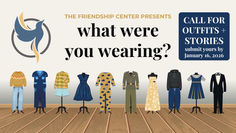
CULTURE OF ABUSE
Exposure to abuse culture begins at a very early age. It is woven into the fabric of our society and reinforces the idea that certain people are superior to others. It allows for sexism and the objectification of women, along with many other types of prejudice. A closer look into abuse culture helps us understand why predominantly women are subjected to domestic violence, sexual assault, and stalking.
Gender roles
Most societies in western colonized nations like the US are conditioned to accept gender norms and stereotypes about how members of each gender "should" behave. For example:
-
Boys wear blue and play with trucks.
-
Girls wear pink and play with dolls.
-
Boys have nicknames like “Tiger,” "Champ," and “Chief," which signal assertiveness.
-
Girls are called “Princess” and “Sweetie,” which reinforce delicateness.
-
Boys are told to “man up,” take control, and not show emotion.
-
Girls are reminded to be “ladylike," polite, and warm.
-
Boys are taught to solve conflict through physical dominance and intimidation: "boys will be boys".
-
Girls are taught to avoid conflict entirely.
Adult role models (parents, teachers, faith leaders, coaches) are constantly reminding children to adhere to traditional gender roles, often unintentionally. “He picks on you because he likes you” is a common example of how an adult might normalize inappropriate or abusive behaviors.
These types of messages start when kids are young, and lead to violence later in life, either as a victim or an offender. Gender-based violence is rooted in these harmful gender norms and attitudes, as is violence against LBGTQIA+ and gender non-binary people.
It's important to remember that both the binary concept of gender and the gender norms that characterize the dominant culture are relatively new ideas in North America. Prior to 15th century contact with white Europeans, societies on this continent were not generally patriarchal structures supported by dispossession of Indigenous land and peoples, chattel slavery, and subjugation of women through tactics like domestic and sexual violence. It's easy to take for granted that the gender norms many of us live with were crafted in service of a settler colonial agenda grounded in white male private property ownership, but it's critical context to understanding how we got here.
Victim blaming
Abuse culture (sometimes called rape culture) teaches girls it’s up to them to avoid becoming a victim. If a girl or woman becomes a victim of physical and/or sexual violence, she is often asked "What were you wearing?", "Were you drinking?", and why she would put herself in a dangerous situation. Similarly, people often ask of domestic violence survivors "Why don't you leave?" or "Why didn't you leave sooner?"
Media and pop culture
Media and advertising reinforce many aspects of abuse culture and victim blaming. The content we consume glamourizes violence against women and teaches boys to equate masculinity with toxic forcefulness, while girls are supposed to rely on men for safety and protection. To boot, consent and boundaries are not often modeled in popular media.
Pop culture also contributes to negative self-image for both men and women. It creates impossible expectations for how we “should” look. Popular media also romanticizes the “battle of the sexes” trope, making it seem like there can't be any romance if there isn't conflict first. A common expression says it best: "All is fair in love and war."
Language
The language we use can also inure us to senseless violence as well. So examples include:
-
Shoot the breeze
-
Kill some time
-
Knock it off
-
Nail down the details
-
When push comes to shove
-
Punch the timeclock
-
"You're killing it!", "You're crushing it!", You knocked it out of the park!"
Addressing abuse culture
-
Listen and Observe! Pay attention to the language and actions we use and accept that certain language and actions can be hurtful whether we intend them to be or not. Remember that abuse culture has been passed through generations and is all around us.
-
Don't vilify your yourself or others. Change takes time and awareness. Abuse culture has been woven into the fabric of our society for generations. Have open and honest conversations about the issue, and don't make yourself or others the enemy.
-
Make an effort to be better. We decide what words to use, what jokes to make, what media to consume, whom to spend time with. We can stamp out abuse culture by deciding not to participate in it, and by helping others realize the impacts of their actions so they can make different choices. We can also have conversations with the kids in our lives about these issues and build a more equitable future.
Resources from TFC's Blog
To learn more about some of the key issues intersecting with domestic violence, sexual assault, and stalking, visit our Resources page.









